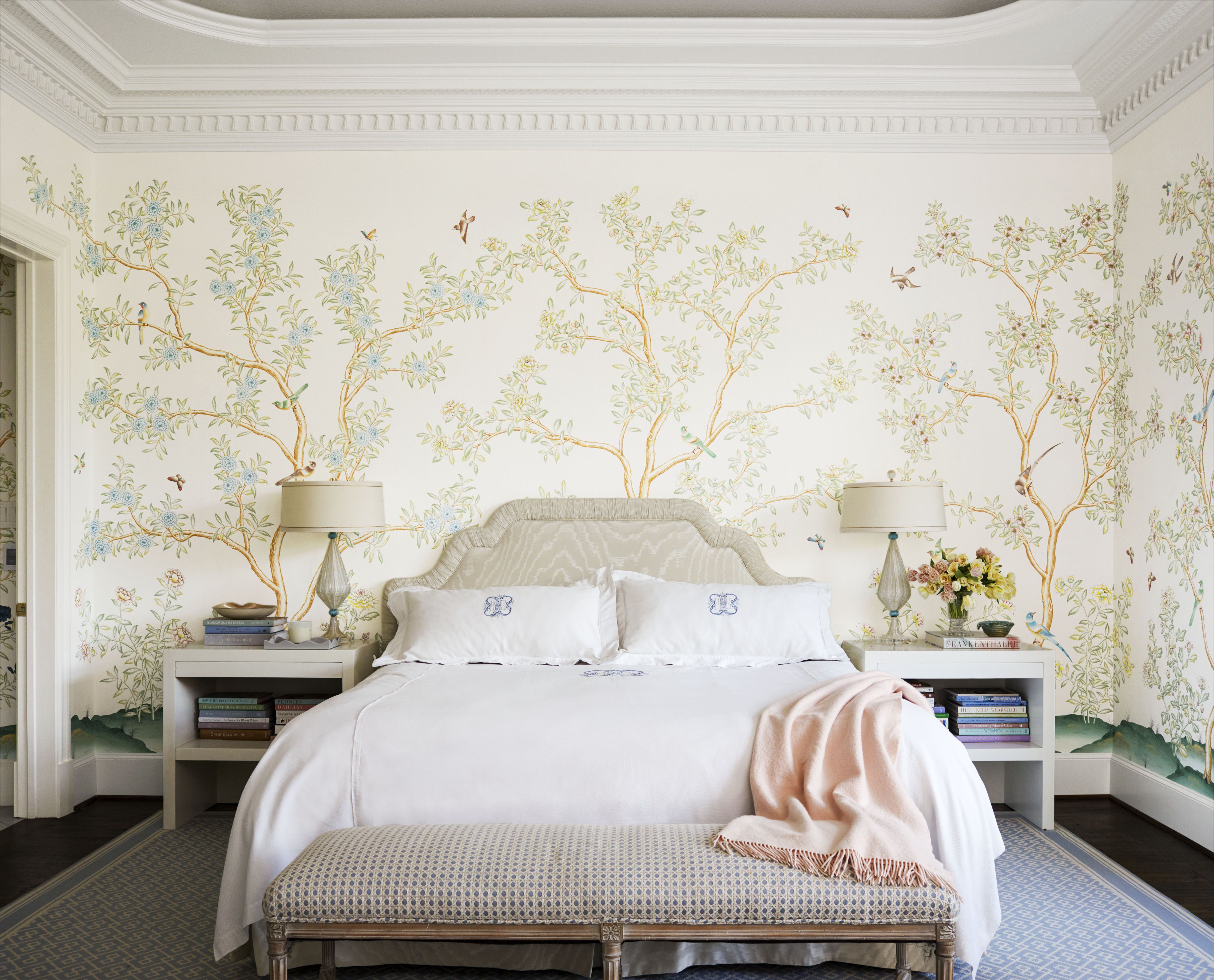Visual Appeal and Design Elements: Wallpaper Bedroom Design Ideas

Wallpaper can be a powerful tool for transforming a bedroom from ordinary to extraordinary. It adds personality, creates visual interest, and can even influence the mood and atmosphere of the space.
Using Wallpaper to Create Visual Interest and Focal Points, Wallpaper bedroom design ideas
Wallpaper can be used to create a focal point in a bedroom, drawing the eye to a particular area. This can be achieved by using a bold, patterned wallpaper on a single wall, such as the wall behind the headboard. This creates a dramatic backdrop for the bed and makes it the center of attention in the room.
Practical Considerations and Tips

Beyond aesthetics, choosing the right wallpaper for your bedroom involves practical considerations to ensure it complements your lifestyle and enhances your space. Durability, ease of cleaning, and compatibility with the bedroom environment are crucial factors to consider.
Selecting Durable and Easy-to-Clean Wallpaper
Choosing wallpaper that can withstand the wear and tear of everyday life is essential, especially in high-traffic areas like bedrooms.
- Vinyl wallpaper is a popular choice for bedrooms due to its durability and easy cleaning. Its smooth surface resists stains and can be wiped clean with a damp cloth.
- Non-woven wallpaper is another durable option, offering excellent tear resistance and a smooth, washable surface. It is also easy to remove without damaging the underlying wall.
- Fabric-backed wallpaper provides a soft, textured look and feel, but it requires more careful cleaning. It’s best suited for low-traffic areas or bedrooms with minimal wear and tear.
Considering Lighting and Natural Light
Lighting plays a significant role in how wallpaper appears in your bedroom. Natural light can affect the color and texture of the wallpaper, while artificial light can create different moods and ambiance.
- Light-colored wallpaper reflects light, making a room feel brighter and larger. This is a good option for bedrooms with limited natural light.
- Darker-colored wallpaper absorbs light, creating a more intimate and cozy atmosphere. However, it can make a room feel smaller, so it’s best suited for larger bedrooms with ample natural light.
- Patterned wallpaper can create visual interest and add depth to a room. However, it’s important to consider how the pattern interacts with natural and artificial light. A busy pattern may overwhelm a small room, while a subtle pattern can enhance a larger space.
Preparing Walls for Wallpaper Installation
Proper wall preparation is crucial for a successful wallpaper installation.
- Clean and smooth the walls: Remove any dirt, dust, or debris using a damp cloth. Fill in any cracks or holes with spackle and sand the surface smooth.
- Prime the walls: Applying a primer creates a uniform surface for the wallpaper to adhere to. It also helps to prevent the wallpaper from absorbing moisture from the wall.
- Measure and cut the wallpaper: Accurately measure the wall and cut the wallpaper strips to size. Overlap the strips by about half an inch to ensure a seamless finish.
